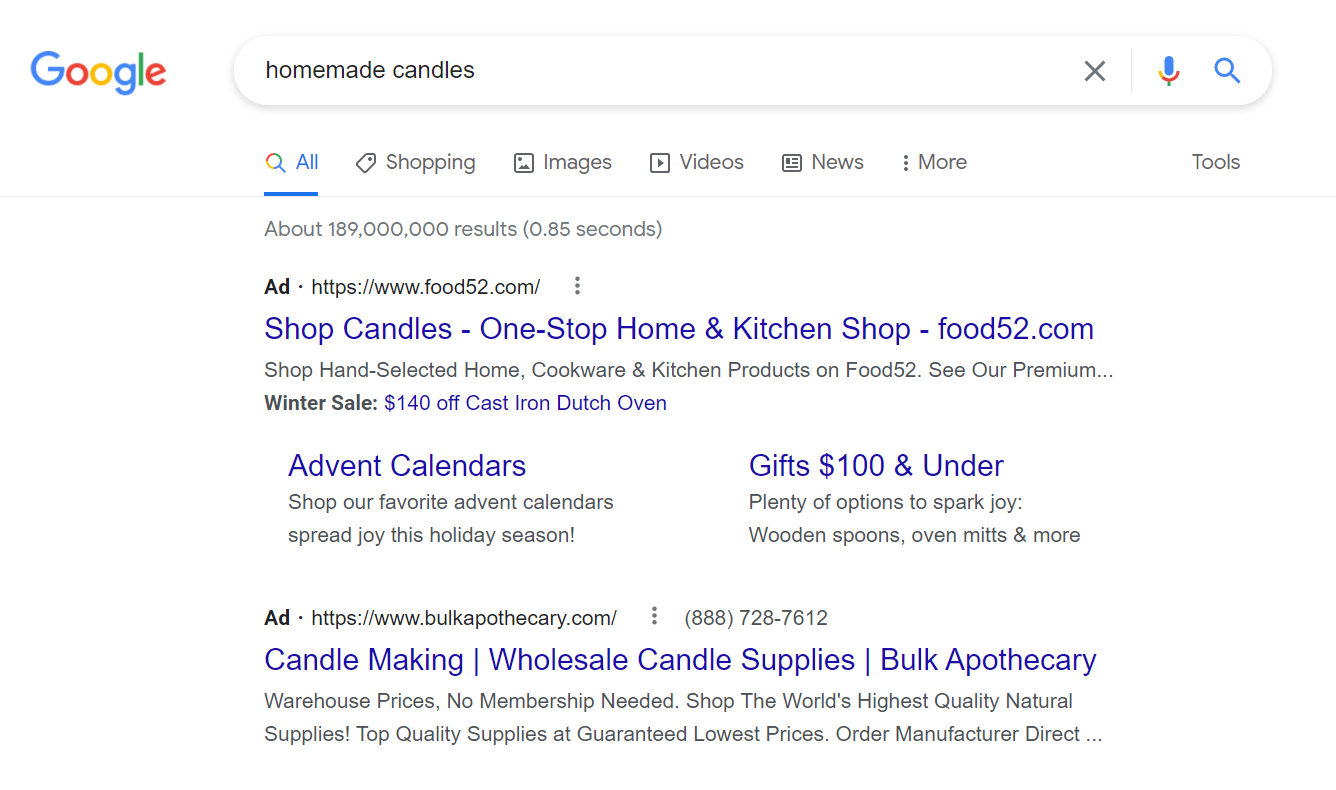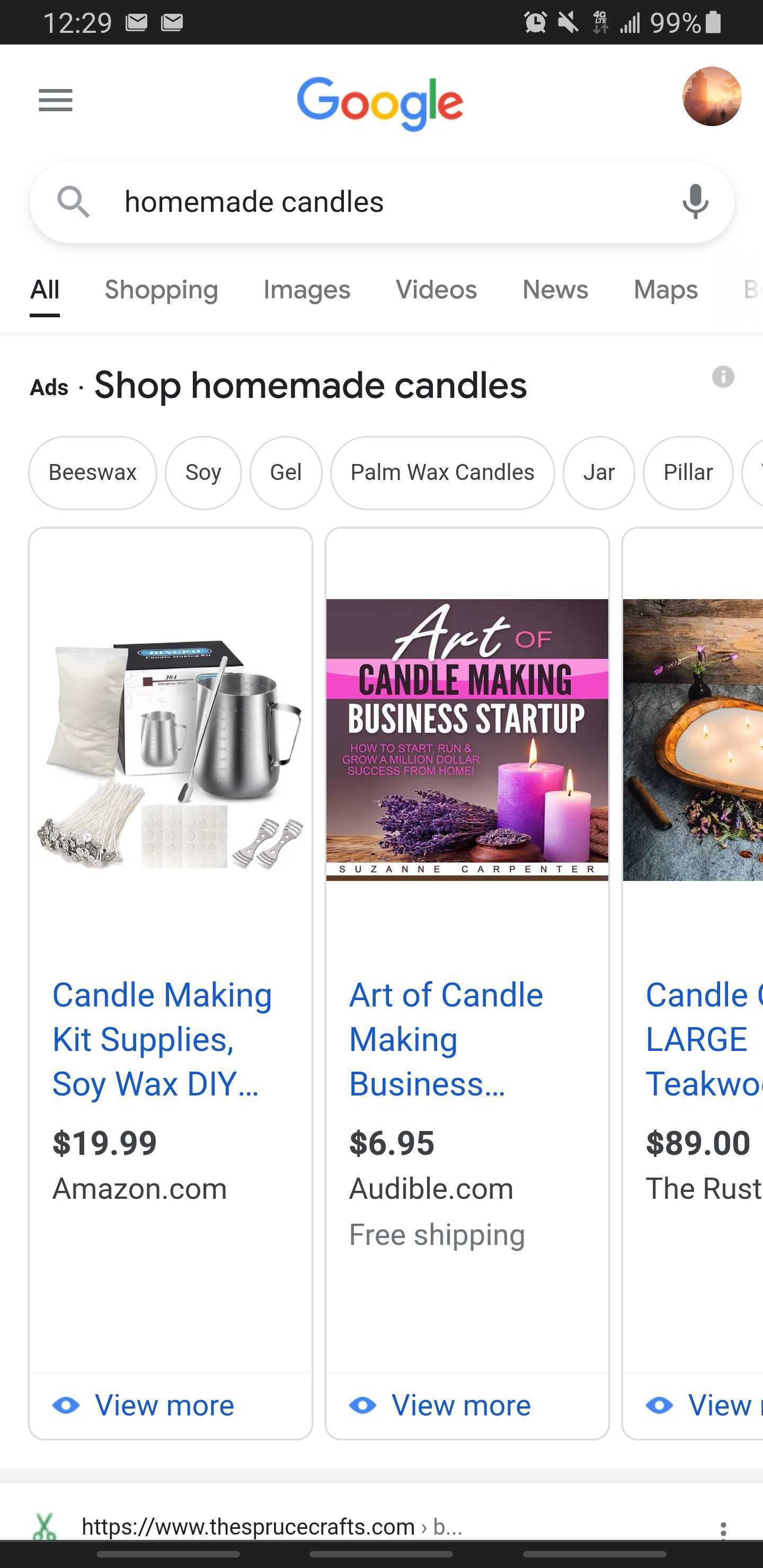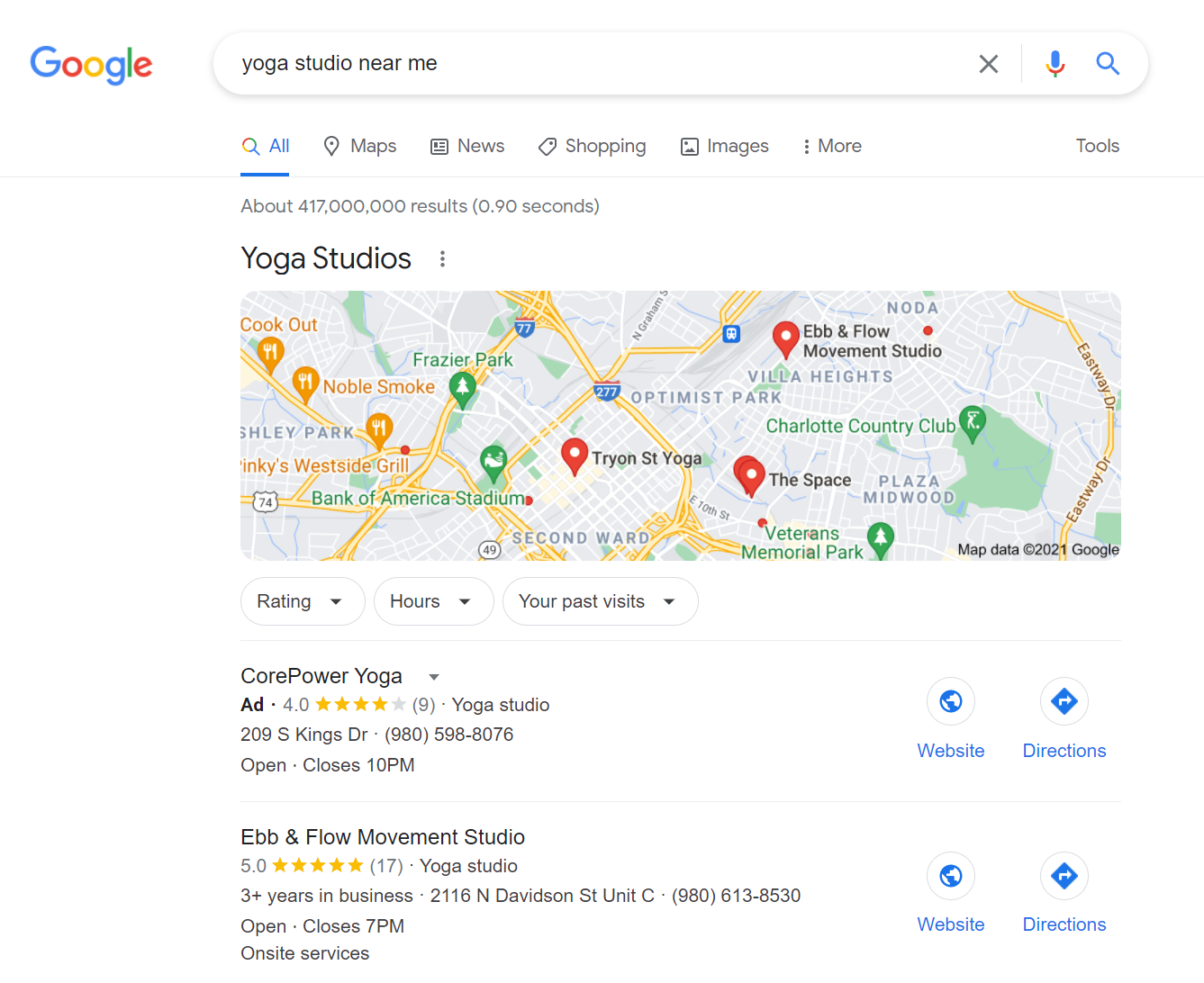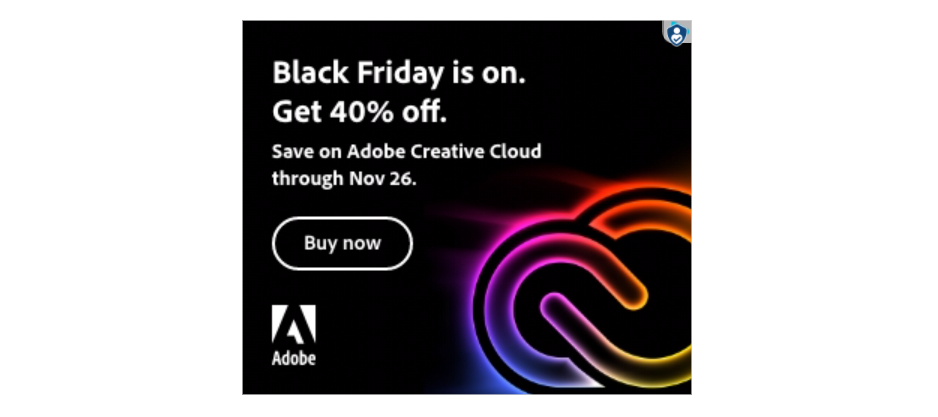Google Ads and Paid Search
Google ads are used to reach anyone who uses a Google search to look for something. Google ads can generate leads, increase website traffic, drive sales, and spread brand awareness. These ads can be targeted towards distinct demographics (like previous buyers or a certain age range). They run based on key phrases and range from search campaigns to product campaigns. Given that there are an average of 3.5 billion searches per day on Google, it’s worth it to tap into this marketing strategy.
Given the variety of use cases and features available, this section will only cover the basics of Google Ads.
Types of Ads
There are a few types of ads that you can run. Search term campaigns, product campaigns, and location campaigns are popular ad campaign types that may be effective for your store.
Google Search Network
Google Search Network ads are ads that show up within a search engine results page (SERP). They can be primarily text-based or include product images. These types of ads display based on search terms.
For example, in the image below (Fig. 1), the user is shown an ad for Food52, a website that this specific user has visited before multiple times. In the second image (Fig. 2), the user does not visit many sites that are advertising for the search term “homemade candles,” so they are instead shown a variety of products from Amazon (and Amazon subsidiaries, i.e. Audible), a place where this user does shop. In this case, Amazon is running product ads, which have a visual component and take the user straight to the product page. Conversely, the text-based ad displayed for Food52 takes the user to a category page for candles, where they can see all their options.

Fig. 1: A user is shown an advertisement for a site they visit with relative frequency.

Fig. 2: A user is shown products from businesses they have purchased from previously.
These two users googling the exact same term are shown vastly different results. Retargeting, or marketing to a user who has already expressed interest in or purchased from your site, is an effective way to use Google Ads to increase brand loyalty and recognition.
Another type of ad is location-based ads. With these advertisements, you’re targeting searches within a certain geographic area. In the search below for yoga studios, the first result is an ad for CorePower Yoga. Even though CorePower is farther from the searcher’s location than the other results, it appears first.

Fig. 3: A search for “yoga studio near me” results in a geo-targeted ad for CorePower Yoga.
Location-based searches are very helpful for locally-run stores hoping to increase their area foot traffic and brand awareness.
Display Network Ads
Display network ads do not rely on SERPs. These ads are displayed on many websites, from blogs to instructional sites. They rely more on compelling visual components and good graphic design than Search Network ads.

This ad for Adobe Creative Cloud was displayed between recipes on a cooking blog.
Display network ads often work well to target users who have previously visited your site and already have some level of familiarity with your products and/or services, or users who are specifically looking at brands who offer similar things (i.e. boutique clothing stores may target those with a recent browsing history at Banana Republic or J. Crew). Otherwise, these ads are more out-of-context and less likely to result in conversions.
Spending Money on Your Name
It may feel silly to run ads for your own name – after all, you own it! But spending money on both your name and your direct competitors is useful.
In the ad below, a search for Tiffany reveals an ad for tiffany.com, but there is also an ad for Blue Nile underneath. Consider what would happen if Tiffany & Co. hadn’t decided to run an ad for their own name. A user searching for Tiffany would be presented with an ad for Blue Nile as the first result. Most searchers rely on the first 3 results on the SERP. If there were 3 ads in a row, none of them for Tiffany, the traffic could have easily skewed in the direction of the other options. How many users would have clicked on Blue Nile’s ad if Tiffany hadn’t paid for an ad for their own name?
Paying for Ads
Paid search campaigns are generally either pay-per-click (PPC) or cost-per-impression (CPM). A PPC ad only charges you when your ad is clicked. By contrast, a CPM campaign charges you each time your ad is displayed, regardless of whether or not a user clicks on your link.
Google ads is an auction. Keywords with high search volumes (i.e “dining room table”) are going to cost more than keywords with low search volumes (i.e. “midcentury modern dining set with chairs”). Your ad is also subject to the Ad Auction. It’s a complex (algorithmic) behind-the-scenes process, but the basis of the Ad Auction is that Google calculates your Ad Rank based on a number of features, including max bid (remember, it’s an auction) and quality. If Google determines that your ad is a better match for a specific user, even if you have a lower bid, you might get the ad placement over someone else with a higher bid but lower quality.
Paid Search for Retail Jewelers
It probably goes without saying that unless you’re a big-box retailer, bidding on search terms like “engagement ring” isn’t a great idea. You’ll burn through your budget quickly, and you won’t attract high-quality traffic that is likely to convert.
Retail jewelers are special, because they are location-specific. They serve a community or area and offer personalized services and reliable, friendly, and familiar faces. Capitalize on what you specialize in by running ads that are targeted to your local area. Run campaigns on your competitors' name(s) and showcase the products and services that are unique to you. This strategy will help stretch your budget and bring high-quality traffic to your site that is likely to convert, either online or in-store.
